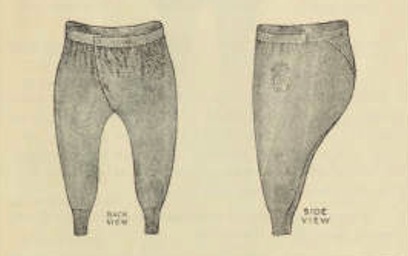
Hey, have you heard? It’s election season.
For most of this season, politics is a spectator sport. But here in Indiana it is finally our turn to step in and play a round—the Indiana primary is next week. So in the spirit of all things presidential, we’re doing a special post this week: The Sheep of the White House!
It turns out that sheep have featured in the annals of U.S. presidential history not once but twice—both Thomas Jefferson and Woodrow Wilson raised sheep on the White House lawn.
These sheep are part of a larger story about nationalism, industry, austerity, and husbandry, and at the heart are three important rams: E.I. DuPont’s Merino, Jefferson’s Shetland, and Wilson’s Shropshire. So without further ado, let’s meet these guys.* Continue reading FIRST FLOCK: Merino Mania & White House Wool





 First, the Woolen System. Those of us who are spinners, weavers, knitters, and crocheters are well versed in the wonders of wool. But it was news to me that, more than a century ago, there arose an influential school of thought that wool is not only a practical material but also a supremely healthful one. In 1880, Dr. Gustav Jaeger (sometimes Jäger) published Standardized Apparel For Health Protection on the health benefits of wearing wool, and he followed it up with Health-Culture (<– how great/vague is that title?!) in 1887.
First, the Woolen System. Those of us who are spinners, weavers, knitters, and crocheters are well versed in the wonders of wool. But it was news to me that, more than a century ago, there arose an influential school of thought that wool is not only a practical material but also a supremely healthful one. In 1880, Dr. Gustav Jaeger (sometimes Jäger) published Standardized Apparel For Health Protection on the health benefits of wearing wool, and he followed it up with Health-Culture (<– how great/vague is that title?!) in 1887.